Valley Ranger
Silver Member
- Joined
- Mar 24, 2011
- Messages
- 2,516
- Reaction score
- 1,369
- Golden Thread
- 0
- Location
- Shenandoah Valley
- 🏆 Honorable Mentions:
- 1
- Detector(s) used
- Minelab Equinox 800, Garrett AT Pro (2), Makro Racer 2, Garrett AT Pinpointer (2)
- Primary Interest:
- Relic Hunting
And I didn't even need a metal detector for this one! A while back, I bought a 1966 F100 and am currently in the midst of an off-frame restoration for that old classic. When I picked it up, I asked the previous owner if he wanted anything still in the cab of truck, i.e., some jumper cables, an old socket set, etc. He said, "No, you are welcome to anything I left in it." When I got it home, I found what appeared to be just an old rusted hunting knife under the seat. I almost threw it away, but decided to toss it up on my workbench so I could use it for a digging tool or something. I picked it up for the first time since that yesterday and began using a wire brush to clean it up. It was then I noticed the maker's mark: "Cattaraugus 225Q."
The Cattaraugus 225Q was a commando utility knife designed for U.S. Special Forces during WWII. It is also often referred to as the "Quartermaster knife." It has a 6" blade and is a full 3/16" thick. The handle is made of stacked leather rings. It sports a steel butt cap that's almost a full 1/2" thick. Besides a fighting weapon, the knife was often used to pry open crates, as well as a makeshift hammer. It has that quality "heft" feel to it. I got all the rust off, put a quick edge on it, cleaned and put a conditioner on the leather and oiled the steel. It is one tough tool and I'm so pleased to have been able to save this piece of American military history.
The 1st pic is of the handle before cleaning and conditioned, the 2nd one, after.
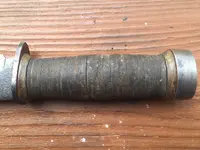
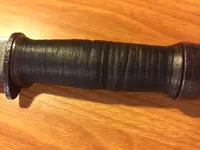
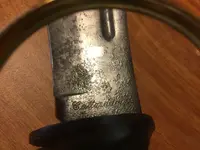
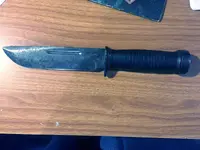
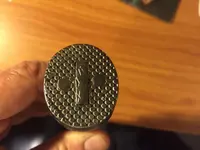
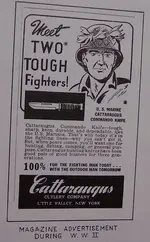
The Cattaraugus 225Q was a commando utility knife designed for U.S. Special Forces during WWII. It is also often referred to as the "Quartermaster knife." It has a 6" blade and is a full 3/16" thick. The handle is made of stacked leather rings. It sports a steel butt cap that's almost a full 1/2" thick. Besides a fighting weapon, the knife was often used to pry open crates, as well as a makeshift hammer. It has that quality "heft" feel to it. I got all the rust off, put a quick edge on it, cleaned and put a conditioner on the leather and oiled the steel. It is one tough tool and I'm so pleased to have been able to save this piece of American military history.
The 1st pic is of the handle before cleaning and conditioned, the 2nd one, after.






Upvote
14



